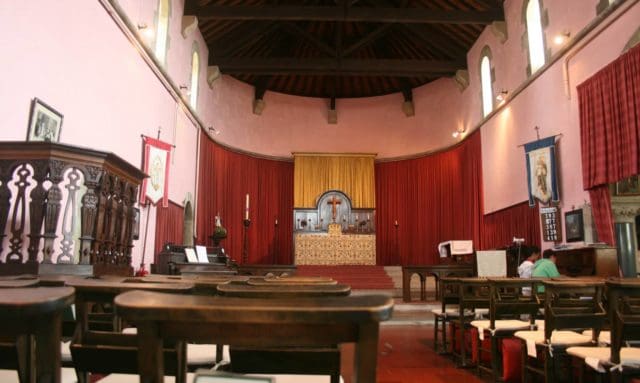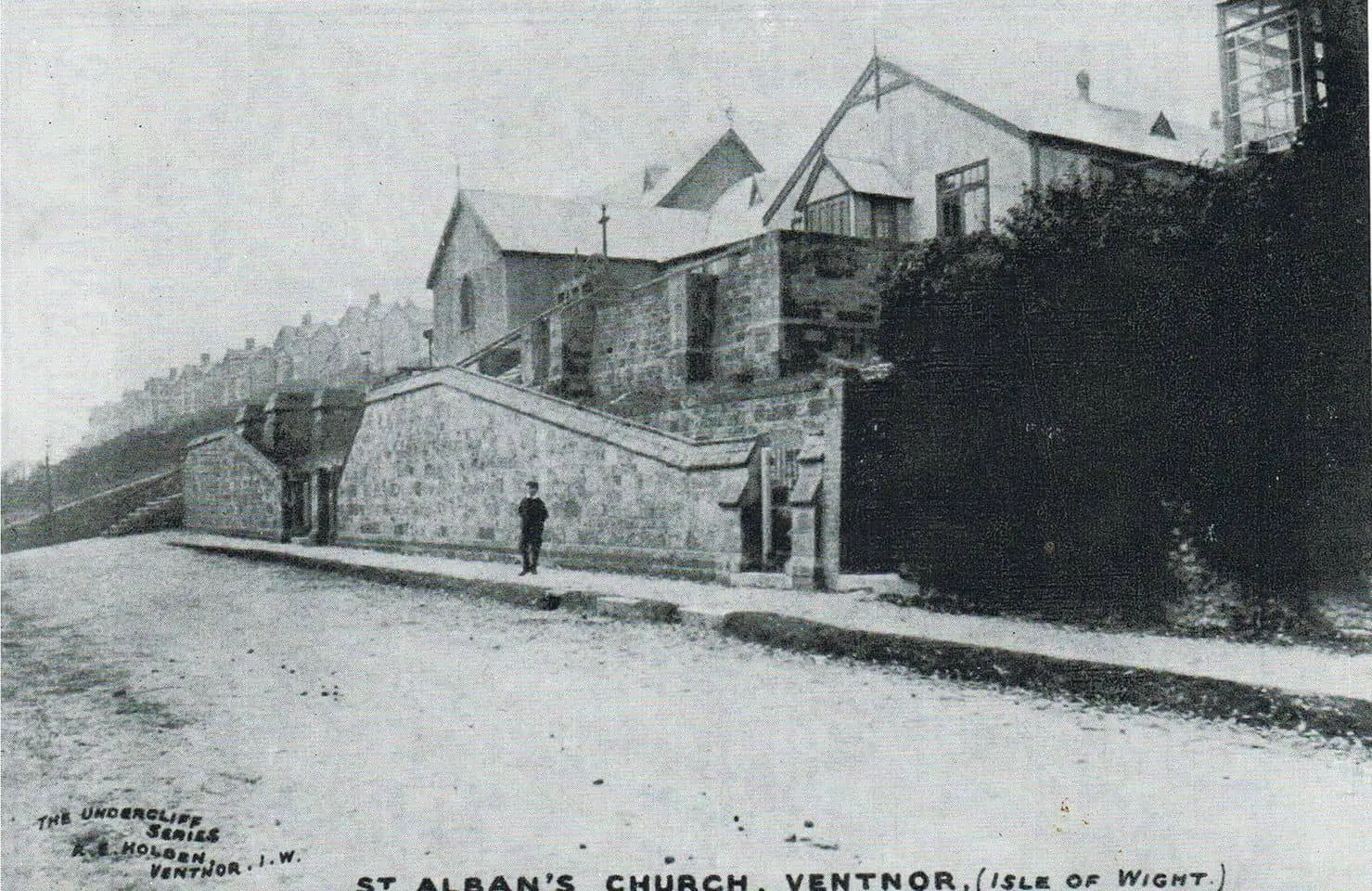On Sunday 25th June 2023, St. Alban’s Church in Ventnor will be celebrating their Centenary with an Evensong from 4pm.
Ventnor’s traditional Anglo-Catholic Church of St. Alban, known as the late Poet Laureate, Sir John Betjeman’s “favourite Island church”, celebrates its centenary this month as the Chapel-of-Ease to the Parish of Godshill and the ‘mother church’ of All Saints’.
Founded in September 1889
Founded in September 1889 under the Curate-in-Charge of the Parish of Godshill Rev. Richard Ussher, the church was formed as a place to allow for those in the furthest part of the parish in Upper Ventnor to worship due to being some four and a half miles from Godshill.
Dedicated to the memory of the 4th century Roman soldier St. Alban (Albanus d. 209 AD) known as England’s first Martyr, the church was originally built from corrugated iron in May 1899 on a plot of land which was donated on St. Alban’s Road, off Zig Zag Road in Ventnor. It officially opened in September 1899 with the first service taking place on St. Alban’s Steps directly outside the main church gates.
From tin church to stone church
By the outbreak of World War One the old corrugated “tin” church had begun to show signs of its age and a fund was set up to build the current permanent stone church. With many in the parish donating to the fund, plans were drawn up and finalised to build a permanent stone basilica for the people of Lowtherville (Upper Ventnor).
By 1922 the foundation stone of the Romanesque style basilica was laid and on the Feast of St. Alban, 22nd June in 1923 the completed St. Alban’s ‘stone’ Church was consecrated by the Bishop of Winchester, Rev. Frank Theodore Woods.

Counterbalancing extreme Evangelicalism
Throughout the decades St. Alban’s Church has continued to keep its Anglo-Catholic traditions within the Anglican community to counterbalance the extreme Evangelicalism that was prevalent in Ventnor town during the 19th century.
Weekly services are sung in traditional language and served with incense burning from the original 19th century thuribles and the large cast brass bell dating back to 1890 is still rung every week during mass.
Original instruments still used
Many of the old ‘tin’ church instruments are used today, including the silver processional cross and the stone baptismal font.
While the ornately carved wooden pulpit is believed to have been crafted from the former beams taken from St. Alban’s Cathedral in Hertfordshire.
The ‘fossilised fish’
One odyssey which is more than a coincidence and dates older than the church, is the ‘fossilised fish’. The fish symbol was used on buildings over 2000 years ago as a code to identify Christian homes and this practice is still popular today.
What seems to be ironic is the appearance of a large fossilised fish which was exposed on one of the large columns within St. Alban’s, which was carved from solid Purbeck Marble and has become somewhat of a pilgrimage in itself.
Delicate historical relics
However the most delicate of historical relics which reflects the history of St. Alban’s Church is the former Banner of St. Alban which was vandalised with acid in 1911 by Kensit preachers during a protest held on St. Alban’s road.
The banner was salvaged by a member of the congregation and for some time had been lost until it was returned to the church in the 1970s where it has been preserved ever since.
Entered the 21st century
While tradition remains in St. Alban’s, the church has entered into the 21st century, once holding a modern variation of a Nativity play with Mary and Joseph arriving at the inn on a motorbike.
Annual celebrations include services to St. Valentine on 14th February, St. Francis on 4th October where the congregation is encouraged to bring their pets for the traditional “pet blessing” and the Feast of St. Nicholas on the 6th December, all of which bring people together to celebrate wildly known events in the Christian calendar.
Rev. Philip Ilott
St. Alban’s was also the parish church of the well established Reverend, the late Philip Ilott who served the parish between 1971 and 1977. Fr. Ilott hosted the TV programme ‘Company’ and featured in Adrian Plass’ best seller “A closer walk with God”.
It was Fr. Ilott who during his ministry on the Island brought the ever popular ‘healing services’ to Ventnor, which was revived five years ago along with the annual Bereavement services held in Ventnor cemetery chapel.
Currently awaiting the installation of a new priest after the retirement of the former Priest-in-Charge Fr. John Ryder in 2019, St. Alban’s hasn’t been deterred from pulling out all the stops to celebrate their centenary with a special Evensong service held in memory of St. Alban.
Evensong service held in memory of St. Alban
The centenary service will take place on Sunday, 25th June at 4pm and will be led by Organist Mr. Andrew Pellow F.G.M.S., F.A.S.C. following the Book of Common Prayer rite and supported by the Isle of Wight St. Barnabas Traditional Anglican Mission.
All are welcome, including pets, with a retiring collection to help the upkeep of the church. Refreshments will be available after the service to allow visitors to explore this beautiful church and its fine acoustics.
Show your support
Those unable to attend or would like to make a virtual donation can do so online via the church.
Weekly Sunday Morning Prayer is held at 9:30 am. Eucharistic Mass is held every second Sunday of the month.
St. Alban’s Church can be found on St. Alban’s Road, Ventnor PO38 1DE





